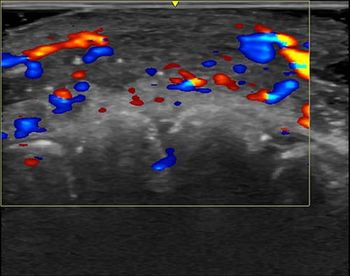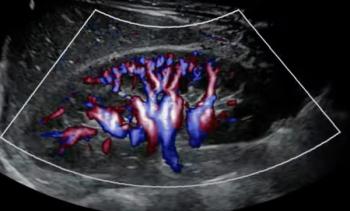
Machine Learning Algorithms Outperform Inexperienced Radiologists
Use of machine learning algorithms to read thyroid nodule ultrasounds helpful, particularly for less experienced radiologists.
Machine learning algorithms may help less experienced radiologists differentiate malignant and benign thyroid nodules through ultrasound, according to a study published in the
Researchers from China sought to construct classifier models using machine learning algorithms and to evaluate their diagnostic performance for differentiating malignant from benign thyroid nodules.
Two radiologists respectively reviewed ultrasound images of 970 histopathologically proven thyroid nodules in 970 patients and their findings were compared with machine-building algorithms: the Naïve Bayes classifier, the support vector machine, and the radial basis neural function network. The nodules were graded according to a five-tier sonographic scoring system. The performance of the machine learning algorithms and radiologists were compared using ROC curve analysis. A total of 507 nodules (52.3%) were malignant, including 487 papillary thyroid carcinomas, 12 follicular thyroid carcinomas, four medullary thyroid carcinomas, three well-differentiated carcinomas, and one clear-cell carcinoma.
The results showed the experienced radiologist (17 years’ experience in reading thyroid ultrasounds) achieved the highest predictive accuracy of 88.7% with a specificity of 85.3%, whereas the radial basis function (RBF)–neural network (NN) achieved the highest sensitivity of 92.3%.
However, the algorithms were more accurate than the inexperienced radiologist, who only had three years’ similar experience:
“The machine learning algorithms underperformed with respect to the experienced radiologist's readings used to construct them,” the researchers concluded. “[A]nd the RBF-NN outperformed the other machine learning algorithm models.”
Newsletter
Stay at the forefront of radiology with the Diagnostic Imaging newsletter, delivering the latest news, clinical insights, and imaging advancements for today’s radiologists.




























